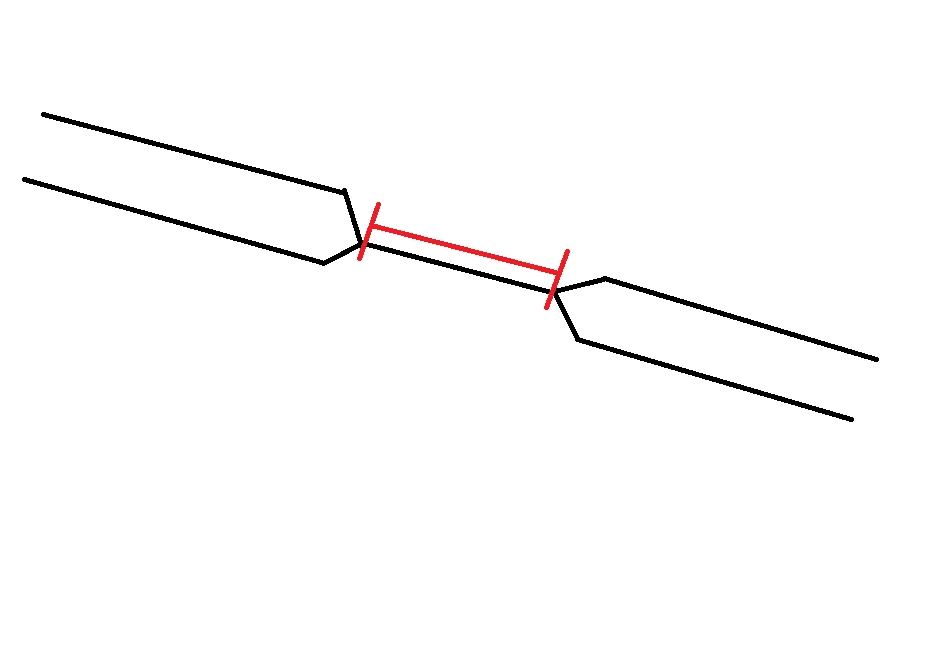There are a couple of different options.
A) You could use a spatialRelator with the single carriageway segments as the requestor and the dual carriageway as the supplier and either touches or intersects as the predicate. If the _related_candidates is 4, that would be the above case.
B) You could use a neighborFinder with the single carriageways as the Base and the Dual carriageway as the candidate, generate the close candidate list, and you can count how many elements there are.
C) You can use a topologyBuilder, and examine the nodes to see which ones contain both a single and dual carriageway, join the resultant nodes back on the edge (based on fme_arc_id) and see which single carriageway edges share both nodes with dual carriageways.
In all three cases you can use a Length Calculator to determine the segment length.




